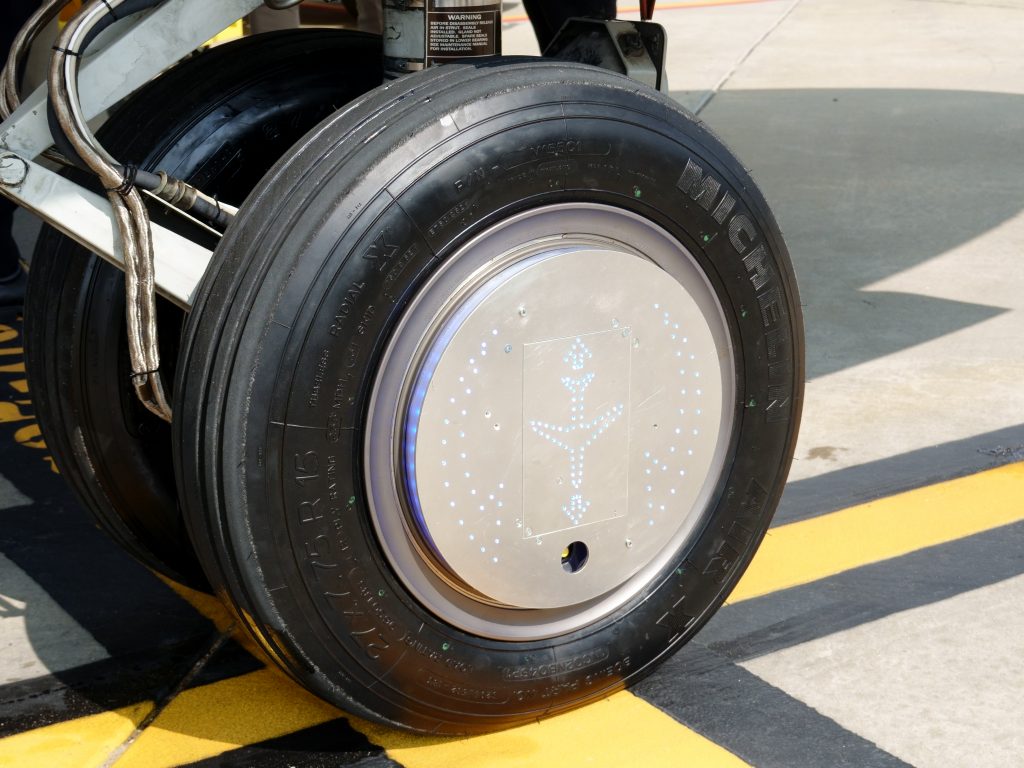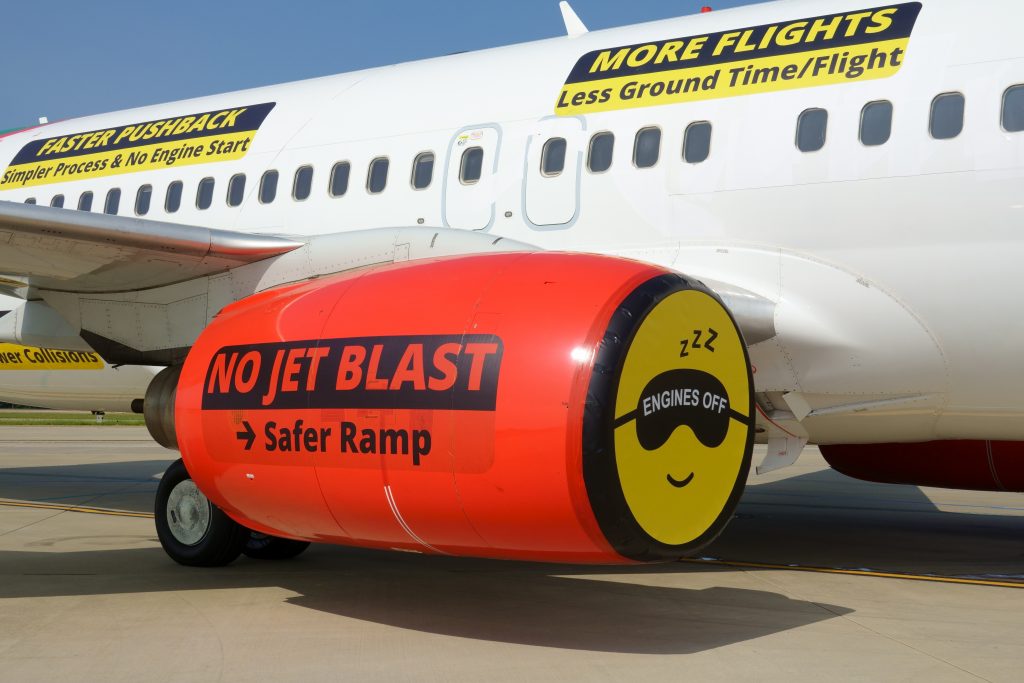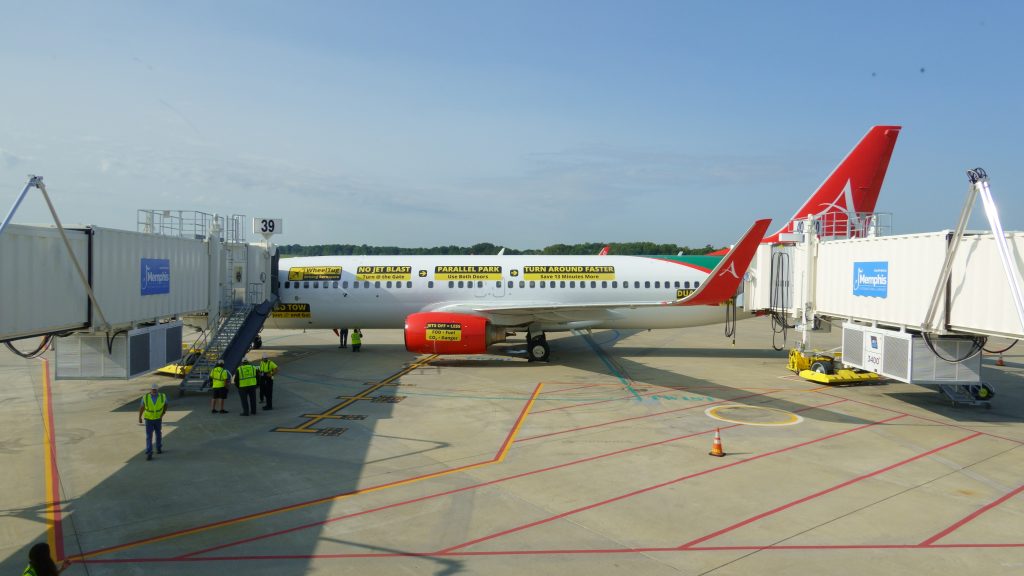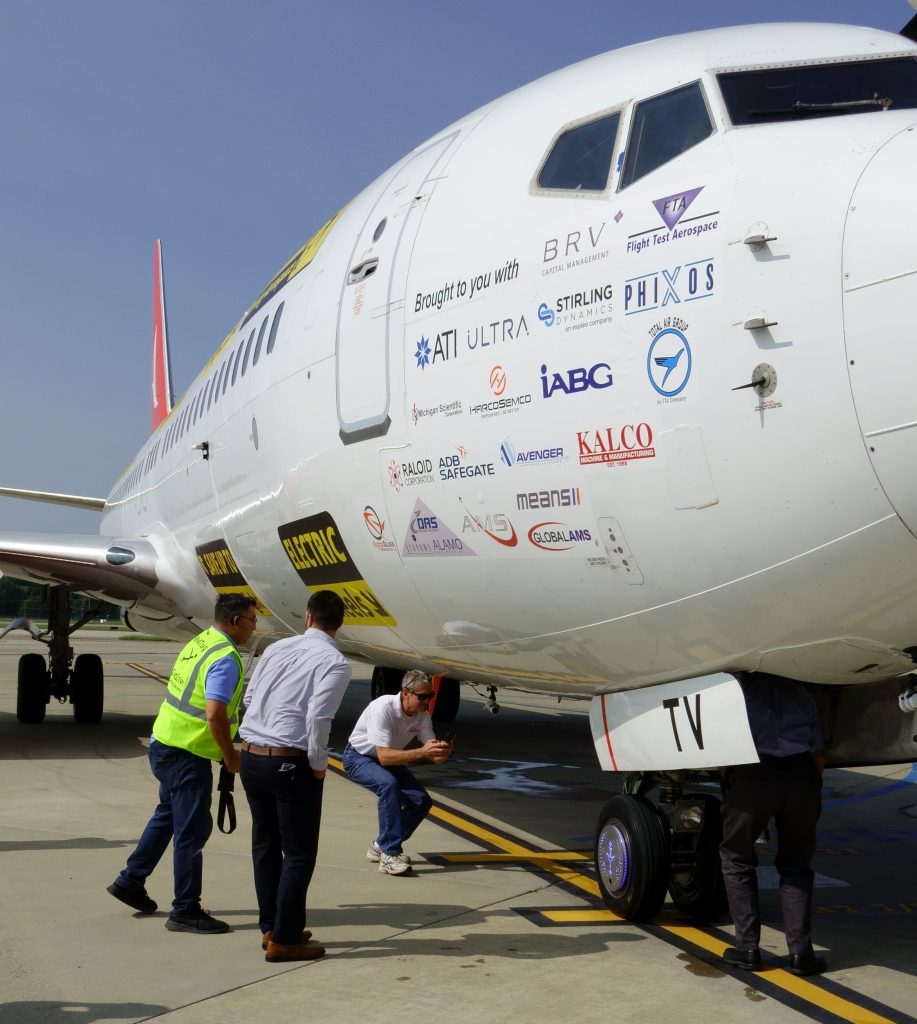I was in Memphis this week for a test drive of WheelTug, an electric motor that fits in the nose wheel of a jet and allows the aircraft to taxi with the jet engines off. WheelTug eliminates the need for a tug to back an plane out of the gate. Jet engines off during taxiing saves fuel and reduces engine damage due to ingesting foreign objects. And on arrival the plane can twist into the gate, parking parallel to the terminal, enabling passenger boarding through both the front and rear exits.
By streamlining gate operations, WheelTug says its system will save airlines time and money. 26 carriers have placed orders for 2200 units.
Testing for FAA certification is underway. Approval could be granted by the end of 2021 with WheelTug entering service soon after.
The atmosphere was celebratory as the people who built this revolutionary system and brought it to market conducted Tuesday’s flawless demonstration. I rode the test plane on the tarmac. Without noise from the jet engines the plane was quieter than I’ve become accustomed to, and the smooth twist back to the gate was impressive.
An airport employee on a shuttle back to the main terminal asked about investing in WheelTug. The company is 58% owned by Borealis Holdings, available indirectly through Borealis Exploration stock which trades under the symbol BOREF. Andrew Tobias has been writing about the company for years. His September 18 post discusses the valuation of Borealis and WheelTug. A google search of WheelTug on his site will pull up enough information to make a decision on investing.




Links:
Nashville media story about the event.
Coverage from Air Insight, including a pilot interview.
Forbes on WheelTug.
A Motor Trend story.
